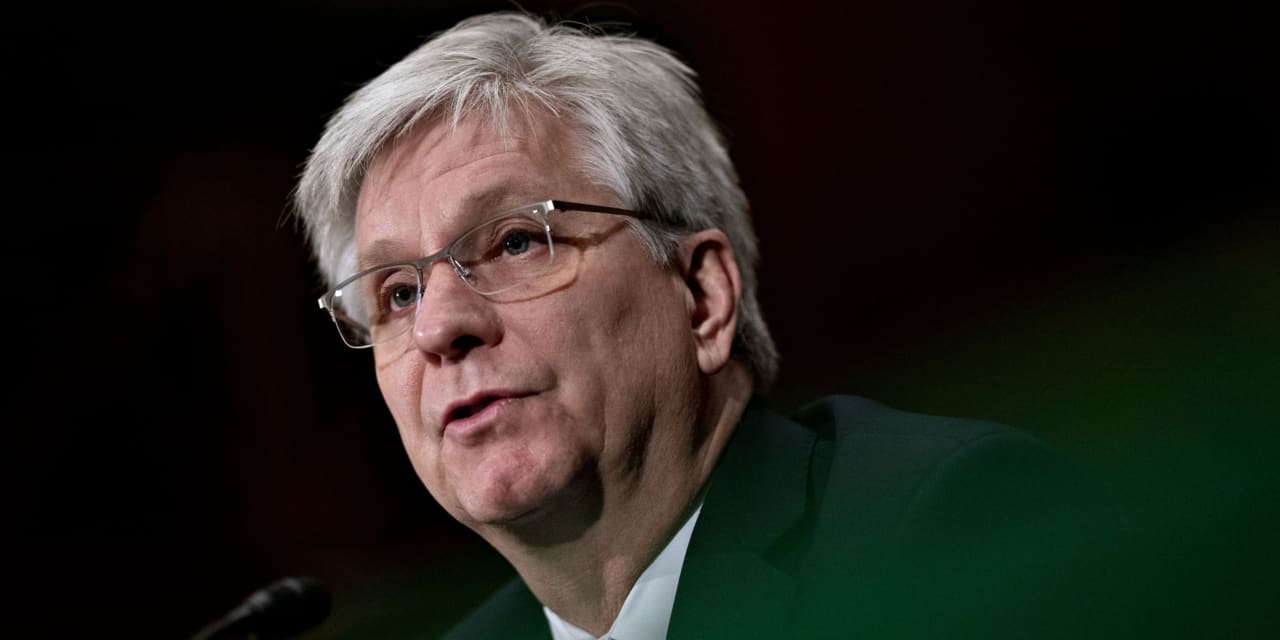The task before the next Federal Open Market Committee meeting will be to reconcile the yawning gap between market expectations for interest-rate cuts and the panel’s own projections for policy for 2024.
While it’s all but certain there will be no rate moves at the end of the two-day meeting on Jan. 31, market participants will be eager to hear how Federal Reserve Chair Powell explains potential future cuts. Present conditions show steady economic growth highlighted by low unemployment, inflation still above the central bank’s targets, and a marked easing in financial conditions highlighted by tight credit spreads and high equity valuations.
Also in the background loom November’s elections. While Fed officials strenuously insist politics play no part in their deliberations, how they affect expectations for business and consumers could influence the economy. That, in turn, could have an impact on policy, albeit a counterintuitive one.
Federal-funds futures continue to price in up to six rate reductions of 25 basis points apiece by December. The market backpedaled on its expectation of the first cut coming as soon as March following comments this past week by Fed Gov. Christopher Waller suggesting no need for rapid easing. Waller’s comments are notable because late last year he helped trigger the speculation about rate cuts, which sparked the huge rallies in bonds and stocks to close 2023 on a high note. (A basis point is 1/100 of a percentage point.)
But the futures market remains far ahead of the FOMC’s most recent Summary of Economic Projections, released at the December meeting. The SEP median calls for the equivalent of three 25-basis-point reductions by the end of the year, based on six of the 19 projections from Fed board members and district bank presidents.
Waller, an influential voice on policy as the former research head for the Federal Reserve Bank of St. Louis, said this past week that rates could start to come down once the FOMC is convinced “that inflation was sustainably near the 2% target.” Measured over three- and six-month spans, the core personal consumption price index has slowed to an annual rate just above 2%.
The concern is that failing to lower the fed-funds rate would amount to an inadvertent tightening from the rise in the real (inflation-adjusted) rate as the pace of price increases wanes. Yet the specter of too-tight policy is belied by the marked easing in financial conditions in recent months.
Torsten Slok, chief economist at Apollo Global Management, highlighted this past week in client emails various manifestations of that in the credit and equity markets. Of the former, prices of leveraged loans rated below investment grade have rallied sharply in recent months. And despite a bit of a dip after the turn of the year, the
S&P 500
closed at a record on Friday, led once again by the big tech stocks. This easing in financial conditions points to stronger growth in the economy ahead, he noted.
J.P. Morgan’s equity strategy team led by Dubravko Lakos-Bujas wrote in a research note that net liquidity from the Fed actually has been increasing in recent months despite quantitative tightening from the decline in its balance sheet. One indication: Bank reserves rose to over $3.6 trillion in the week ended on Wednesday, from $3.2 trillion at the end of September.
The easing in financial conditions is also apparent in equity valuations. At 22 times estimated earnings over the coming 12 months, the S&P 500 is as richly valued as in the fourth quarter of 2021, when the Fed still had short-term rates pegged near 0%, the bank’s note observed. That put the market’s price/earnings ratio some three points above its historical average multiple despite much higher interest rates.
While financial conditions continue to provide a tailwind to the economy, the uncertainty of this year’s elections still looms. That isn’t supposed to play a role in Fed policy, but it remains the elephant (or donkey) in the room.
Ever since President Richard Nixon pressured then-Fed Chairman Arthur Burns to put the monetary pedal to the metal ahead of his 1972 re-election campaign (confirmed in the White House tapes), there has been suspicion that the Fed works to benefit incumbents. However, according to a research note from Matthew Hornbach and Seth B. Carpenter, respectively strategist and chief economist at Morgan Stanley, the Fed has of late scrupulously avoided politics.
Their examination of FOMC meeting transcripts did turn up one interesting tidbit. During the September 2012 meeting, Janet Yellen, then the Fed chair (now Treasury secretary) observed that economic policy uncertainty ahead of that year’s election might be causing businesses to defer investments and hiring. In which case, “a lifting of that uncertainty might arguably provide a significant boost to spending,” she observed.
Would a reduction in political uncertainty have a similarly positive effect on the economy this time? In that case, would it be another point against Fed easing? Conversely, if the political outlook grows cloudier, either for the White House or the makeup of Congress, would that have a depressant effect? An imponderable at this point, but something to watch.
If anything, the latest survey from the University of Michigan out Friday showed consumer sentiment was the highest in two years, highlighted by a decline in inflation expectations to 2.9% in January, from 4.5% just two months earlier.
None of which argues for the kind of aggressive rate cuts priced in fed- funds futures. The gulf between markets and central-bank projections remains massive after a parade of Fed speakers. It’s up to Powell to provide some clarity at the coming confab.
Write to Randall W. Forsyth at randall.forsyth@barrons.com
Read the full article here




